Enigma Of Nehushtan – The Biblical Copper Snake
David Tee - AncientPages.com - During their desert wandering, the people of Israel became discontented and started to complain. They complained so much that God's patience was worn thin. In response to their complaint, God decided to teach them a lesson instead of making the people's lot better.
The Brazen Serpent (watercolor circa 1896–1902 by James Tissot) Credit: Public Domain
As punishment, God sent snakes to torment his people when they realized their sin's gravity. They repented. When God saw their repentance, he had mercy on them and instructed Moses to construct a copper snake. To be healed, all those who had been bitten had to do was look at the copper snake. See Numbers 21 for the complete details.
What Was The Nehushtan?
In its original form, the Nehushtan was a simple snake-like form made from copper. It was placed on a pole for all the people to have a clear view of it when real snakes bite them.
There is no mention in the Bible that it was destroyed after God relieved the Hebrews of their infliction. It means that it is possible that the copper snake stayed in existence until the time of Hezekiah.
When Hezekiah became king, the copper snake was seen as a god. Who made it a god is unknown, as there were many kings between David and Hezekiah who strayed from the ways of God. Anyone could have created a cult following using the snake as their leader.
The Symbolism Of The Nehushtan
If any natural symbolism is placed on the Nehushtan, it was done by different societies and is not biblical. Some scholars compare the raising of the copper snake in the Hebrew camp to something on par with voodoo practices.
There have been non-Israelite temples dedicated to the Nehushtan or have the snake symbol as part of their religious artifacts. The Midianites are one example, as one was found in the temple dedicated to Hathor in the Timna Valley.
In 1508 Michelangelo's image of the Israelites deliverance from the plague of serpents by the creation of the bronze serpent on the ceiling of the Sistine Chapel. Credit: Public Domain
Snakes on staff have long been a symbol of the medical profession dating back to the ancient Greeks. This nation held snakes as sacred and often used them in healing rituals. Thus, it seems natural for them to place the snake as their medical symbol.
Of course, this action came long after the Old Testament account, as the Greeks did not invade Palestine till the time of Alexander. It is possible that the Greeks heard the wandering version and liked what they heard. They then adopted the snake into their healing practices.
The Hebrews And The Nehushtan
Modern Israelites do not think much of the Nehushtan. They seem to keep it in its context and think it is an ancient tale and religious cult. Why the symbol was not used in the Bible again is not known.
There is nothing unusual with God using only one type of miracle once. Jesus only turned water into wine once. While it was used only once in the Bible as a miraculous symbol, the copper snake was mentioned several times in later books.
The mother of King Jehoiakim was given a name similar to Nehushtan, and Jesus referred to it in John 3. Jesus illustrated his upcoming sacrifice by using Moses' event as an example.
As time goes on, the original intent of certain symbols becomes distorted. Legends and myths are added to the beginning of different characters, and some individuals take advantage f this. They capture people using their ignorance of the truth when they elevate a symbol to divine power or presence.
The copper snake was no exception. Hezekiah destroyed the copper snake because of this elevation to god status.
Archaeology And The Nehushtan
Excavators have found several copper snake icons throughout Israel and Mesopotamia. These artifacts date mainly to the Bronze Age. However, no ancient manuscript describes how the copper snake transitioned from a medical miracle to a cult object.
Many theories abound on this topic, with one stating that the Hebrews took the symbol from the Canaanite religion.
Written by – David Tee AncientPages.com Staff Writer
Updated on January 27, 2023
Copyright © AncientPages.com All rights reserved. This material may not be published, broadcast, rewritten or redistributed in whole or part without the express written permission of AncientPages.com
Expand for referencesKelley, J. L. (2016). Nehushtan. In J. D. Barry, D. Bomar, D. R. Brown, R. Klippenstein, D. Mangum, C. Sinclair Wolcott, … W. Widder (Eds.), The Lexham Bible Dictionary. Bellingham, WA: Lexham Press
More From Ancient Pages
-
 The Controversial History Of Moses – Who Was He Really?
Biblical Mysteries | Sep 13, 2015
The Controversial History Of Moses – Who Was He Really?
Biblical Mysteries | Sep 13, 2015 -
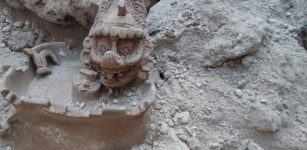 Unique Statue Of Mayan God K’awiil Associated With Lightning, Serpents, Fertility, Maize, Royal Lineage Found On Maya Train Route
Archaeology | May 17, 2023
Unique Statue Of Mayan God K’awiil Associated With Lightning, Serpents, Fertility, Maize, Royal Lineage Found On Maya Train Route
Archaeology | May 17, 2023 -
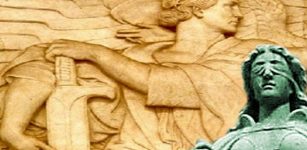 Lady Justice (Justitia): Legal And Philosophical Concept Produced In Remote Antiquity
Featured Stories | Nov 7, 2019
Lady Justice (Justitia): Legal And Philosophical Concept Produced In Remote Antiquity
Featured Stories | Nov 7, 2019 -
 Mystery Of The Bloody Island Poveglia – A Place Of Hell In Ancient And Modern Times
Featured Stories | Jan 21, 2016
Mystery Of The Bloody Island Poveglia – A Place Of Hell In Ancient And Modern Times
Featured Stories | Jan 21, 2016 -
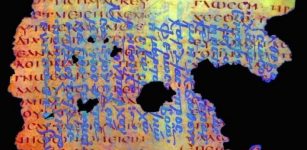 Never-Before-Seen Ancient Texts Hidden In Saint Catherine’s Monastery In Sinai Are Now Available Online
Archaeology | Dec 21, 2017
Never-Before-Seen Ancient Texts Hidden In Saint Catherine’s Monastery In Sinai Are Now Available Online
Archaeology | Dec 21, 2017 -
 Ancient DNA Reveals Origin Of First Bronze Age Civilizations In Europe
Archaeology | May 8, 2021
Ancient DNA Reveals Origin Of First Bronze Age Civilizations In Europe
Archaeology | May 8, 2021 -
 Airmid: Irish Goddess Of Healing And Herbs And One Of The Tuatha Dé Danann
Celtic Mythology | Feb 2, 2018
Airmid: Irish Goddess Of Healing And Herbs And One Of The Tuatha Dé Danann
Celtic Mythology | Feb 2, 2018 -
 Stone Artifacts Reveal Humans Lived In Philippines 700,000 Years Ago – Much Earlier Than Previously Thought
Archaeology | May 11, 2018
Stone Artifacts Reveal Humans Lived In Philippines 700,000 Years Ago – Much Earlier Than Previously Thought
Archaeology | May 11, 2018 -
 Invisible Ink On Antique Nile Papyrus From The Island Of Elephantine – Revealed
Archaeology | Aug 21, 2019
Invisible Ink On Antique Nile Papyrus From The Island Of Elephantine – Revealed
Archaeology | Aug 21, 2019 -
 Climate In The Andes Has Driven 7,000 Years Of Dietary Changes – New Study Reveals
Archaeology | Feb 9, 2022
Climate In The Andes Has Driven 7,000 Years Of Dietary Changes – New Study Reveals
Archaeology | Feb 9, 2022 -
 Oldest Known Fossil Footprints Discovered On Crete By Polish Researcher Challenge Established Theories Of Human Evolution
Archaeology | Nov 11, 2017
Oldest Known Fossil Footprints Discovered On Crete By Polish Researcher Challenge Established Theories Of Human Evolution
Archaeology | Nov 11, 2017 -
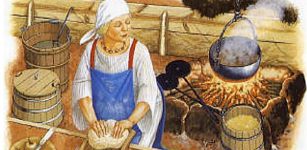 Cooking Gear Found In Graves Of Viking Men And Women
Archaeology | Jun 27, 2019
Cooking Gear Found In Graves Of Viking Men And Women
Archaeology | Jun 27, 2019 -
 Mystery Of The Ancient Reptilian Gods Remains A Complex Subject – Memories Of The Past – Part 1
Ancient Mysteries | Feb 6, 2022
Mystery Of The Ancient Reptilian Gods Remains A Complex Subject – Memories Of The Past – Part 1
Ancient Mysteries | Feb 6, 2022 -
 Ancient Hindu High-Tech That Contributed To Modern Science
Civilizations | Nov 11, 2014
Ancient Hindu High-Tech That Contributed To Modern Science
Civilizations | Nov 11, 2014 -
 Gungnir: Odin’s Magical Weapon That Provoked Or Reduced Conflicts In Norse Mythology
Featured Stories | May 12, 2020
Gungnir: Odin’s Magical Weapon That Provoked Or Reduced Conflicts In Norse Mythology
Featured Stories | May 12, 2020 -
 First Fossils Of Ancient Human Relatives Sent To Space – Tribute To Science And Our Ancient History
Fossils | Sep 12, 2023
First Fossils Of Ancient Human Relatives Sent To Space – Tribute To Science And Our Ancient History
Fossils | Sep 12, 2023 -
 On This Day In History: Execution Of Saints Crispin And Crispinian – On Oct 25, 286
News | Oct 25, 2016
On This Day In History: Execution Of Saints Crispin And Crispinian – On Oct 25, 286
News | Oct 25, 2016 -
 Ice Core Records From Greenland Tell Stories Of Rise And Fall Of Ancient European Civilizations
Archaeology | May 24, 2018
Ice Core Records From Greenland Tell Stories Of Rise And Fall Of Ancient European Civilizations
Archaeology | May 24, 2018 -
 Oldest Evidence To Date: 80,000-Year-Old Stone Blades Of Homo Sapiens Found In Jebel Faya, Arabia
Archaeology | Feb 19, 2025
Oldest Evidence To Date: 80,000-Year-Old Stone Blades Of Homo Sapiens Found In Jebel Faya, Arabia
Archaeology | Feb 19, 2025 -
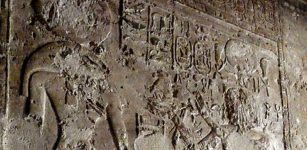 Pakhet ‘Night Huntress’: Egyptian War-Like Lioness Goddess Associated With Artemis
Egyptian Mythology | Mar 4, 2019
Pakhet ‘Night Huntress’: Egyptian War-Like Lioness Goddess Associated With Artemis
Egyptian Mythology | Mar 4, 2019


